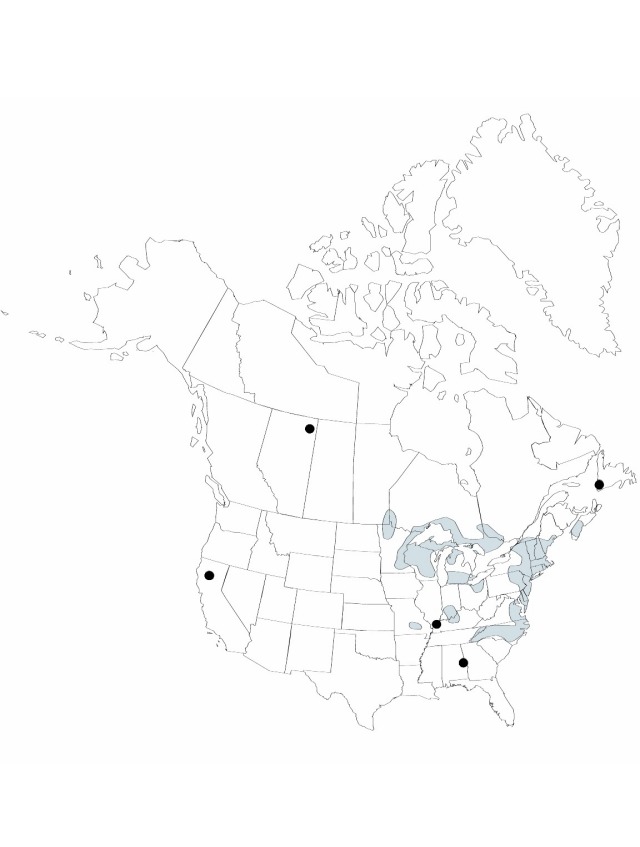Najas gracillima
Beitrage zur Kenntniss der Gattung Najas 23. 1870.
Stems slightly branched distally, 4.5–48 cm × 0.2–0.7 mm; internodes 0.1–3.2 cm, without prickles. Leaves spreading to ascending with age, 0.6–2.8 cm, lax in age; sheath 0.5–1.5 mm wide, apex truncate; blade 0.1–0.5 mm wide, margins minutely serrulate, teeth 13–17 per side, apex acute with 2–3 teeth, teeth unicellular; midvein without prickles abaxially. Flowers 1–3 per axil, staminate and pistillate on same plants. Staminate flowers in distal axils, 1.5–2 mm; involucral beaks 2-lobed, 0.8 mm; anthers 1-loculed, 1.3 mm. Pistillate flowers distal to proximal on plant, 0.5–2.7 mm; styles 0.3–1.5 mm; stigmas 2-lobed. Seeds not recurved, light-brown, fusiform, 2–3.2 × 0.4–0.7 mm, apex with style situated offat center; testa dull, 3 cell-layers thick, pitted; aeroleareoles regularly arranged in 40 longitudinal rows, not ladderlike, 4-angled, longer than broad, end walls raised. 2n = 24, 36.
Phenology: Flowering summer–fall.
Habitat: Soft water lakes
Elevation: 0–200 m
Distribution

Man., Ont., Nfld. and Labr. (Nfld.), N.S., Ala., Calif., Conn., Del., D.C., Ill., Ind., Ky., Maine, Md., Mass., Mich., Minn., Mo., N.H., N.J., N.Y., N.C., Ohio, Pa., R.I., Tenn., Vt., Va., Wis., Eurasia
Discussion
No specimens were seen from in Alberta, Manitoba, or Quebec, but the species is to be expected there.
Najas gracillima is most similar to N. minor, especially in vegetative condition. Najas gracillima, however, can be separated from the latter species by its style arising off-center at the apex of the ovary wall and by its aeroleareoles being longer than broad. Late in the growing season, the leaves of N. minor become recurved; those of N. gracillima do not.
Selected References
None.
Lower Taxa
"elongating" is not a number.